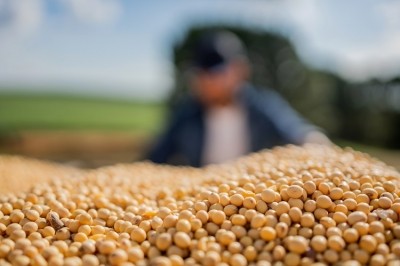Future Food-Tech 2024
Is food and drink innovation broken? Lessons in getting it right

A significant number of businesses were not doing NPD or collaboration in the most effective way, nor were they correctly or openly adopting new and emerging technologies, despite their ability to drive innovation and sales significantly forward.
“The most successful way of driving impact from partnerships is from being clear about innovation and impact goals, and defining the strategy to the final solution that delivers change,” said Unilever global R&D head of Unilever ice cream Zbigniew Lewicki at the Future Food-Tech event in London.
An example of great collaboration from partnership was sectors coming together to reverse damage to the world’s ozone layer, he said, citing how technology, regulators and organisations joined forces and created alliances to deliver a joint result.
But mindset could take businesses only so far, said CEO and NotCo founder Matias Muchnick. “We understand the pains of innovation, how broken it was in that big companies pay marketing agencies to create a concept,” he said.
What does business success look like?
“We decided to drive change through tech and not mindset,” he said of the intention behind his business.
“Collaboration is where you not only have a very clear brief of what success looks like, but the value has to be clear,” he added.
Competing sectors could also work together towards a common goal, as Those Vegan Cowboys CEO Hille van der Kaa discovered when launching the business’s casein.
“As a start-up, we learnt so much from partnerships,” she said. “We were able to make the first batch of casein, brought it out and then worked with the dairy industry to have its feedback and that’s how we learnt not to stick with cow casein, because the industry said we’d be limited [and unable to produce] cheese with specific melt, stretch or temperature.”
The laws of collaboration
But specific rules or “laws of gravity” should be observed when it comes to partnering, Lewicki advised. “In the long run, there is almost always the law of gravity for successful partnership, which is partly of input and partly of benefits.”
“It’s about understanding the landscape and driving parity [on all sides] and having a clear, articulated goal that is understandable and obtainable for all partners.”
There is also a necessity to consider the human element, advised Nutreco’s Susanne Weigel. “When you have a partnership, it’s not an abstract rule where two companies have to find the right pathways. It’s about a handful of individuals who make it successful or not.”
She also advised veteran businesses to 'not be scared of death', in that they shouldn’t protect something just because it was “part of the business strategy” if they were trying to evolve of deliver something new in line with a market need.
“Don’t be so scared about the value of death,” warned Weigel. “I’d like to see more corporates and also public institutions think about what we can contribute to the stage where the new techs are, instead of thinking what the business case is. Think about the vision and contribute to innovation.”


















